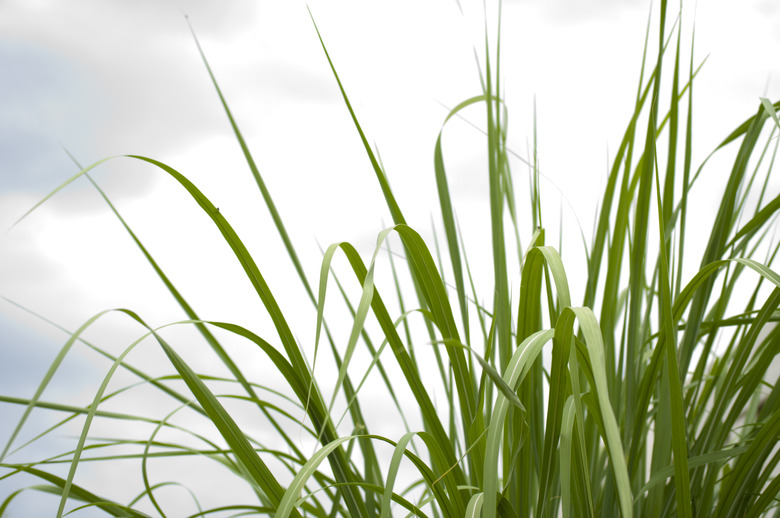How To Identify Sweet Grass
Called the "Hair of Mother Earth" in North America, sweet grass (Hierochloe odorata) is traditionally use as a sacred plant, along with sage, tobacco, and cedar, by people in both Europe and North America. Some Native American tribes use sweet grass in prayer and ceremonies after braiding, drying, and smoldering the long leaves, which they believe attracts positive energy and spirits. Native Americans and African-American slaves also used sweet grass for weaving baskets. Identifying sweet grass can help you spot this perennial growing wild among other grasses in marshes and wet meadows and along streams and lakes in U.S. Department of Agriculture plant hardiness zones 3 to 9.
Step 1
Look at the bottom of the sweet grass leaves, which appear white and shiny like satin ribbons, and can be seen from a distance reflecting the sun. Note that sweet grass leaves do not have hairs.
Step 2
Notice how the sweet grass leaves curl as they dry in the sun, while other types of grass stay flat as they dry.
- Called the "Hair of Mother Earth" in North America, sweet grass (Hierochloe odorata) is traditionally use as a sacred plant, along with sage, tobacco, and cedar, by people in both Europe and North America.
- Some Native American tribes use sweet grass in prayer and ceremonies after braiding, drying, and smoldering the long leaves, which they believe attracts positive energy and spirits.
Step 3
Examine the leaf blades of sweet grass, which appear long and narrow, with the widest part of the blade measuring 1/4 inch.
Step 4
Inspect the blossoms of sweet grass, which emerge in three-flowered spikelets measuring 1/4 inch long. Notice how each flower cluster has its own stalk.
Step 5
Smell the sweet grass, which has a scent similar to vanilla. Put dried sweet grass in drawers and closets, or with your stored clothing to keep the clothes smelling fresh.
Sweet Grass?
Sweet grass is a bunch grass forming clumps 2 feet tall spreading up to 3 feet wide. The semi-erect gray-green blades develop yellow flowers in the middle of summer. This grass will fill in an area in two years when planted 3 feet apart. Native Americans found many uses for sweet grass. Throughout history, they braided dried stems of sweet grass using them as incense and smudges for religious ceremonies including purification rites. Sweet grass acts as food and bedding material for rodents and small mammals. In the north, picas store the seeds and make nests with the sweet-smelling blades. This grass is useful in restoration of wetlands giving wildlife a place to nest. It is also handy for erosion control on slopes and hillsides with wet soil. Sweet grass prefers full sun, but will tolerate part shade. Dogs can also be a problem for this grass since they will graze on the shoots and roll in the clumps.
- Examine the leaf blades of sweet grass, which appear long and narrow, with the widest part of the blade measuring 1/4 inch.
- In the north, picas store the seeds and make nests with the sweet-smelling blades.
References
- Redwood City Seed Company; Sweet Grass; May 2011
- Purdue University; Sweetgrass: History, Basketry, and Constraints to Industry Growth; Robert J. Dufault, et al.; 1993
- NativeTech: Native American Technology and Art; Uses for Sweetgrass; Tara Prindle
- Lady Bird Johnson Wildflower Center: Hierochloe Odorata
- United States Department of Agriculture Natural Resources Conservation Service: Sweet Grass
- U.S. Forest Service Index of Species Information: Hierochloe odorata
